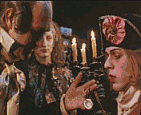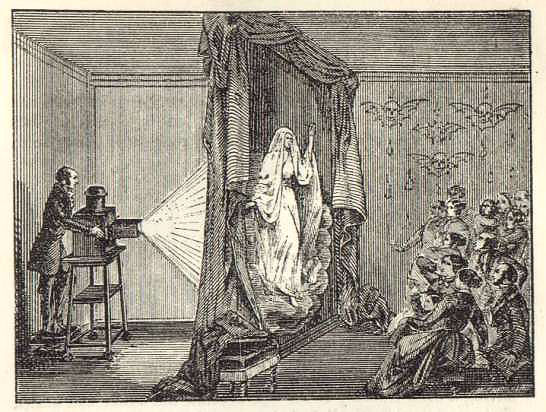 |
The Belgian inventor, physicist and student of optics Etienne Gaspard Robertson was one of the first who presented an impressive horror show with the magic lantern. In 1797 he found the perfect setting for his optical spectre show in an abandoned cloister in Paris, amid ancient tombs and effigies. The images were projected on a translucent screen that was hung between the lantern and the audience, thus hiding the lantern from the public. | |
| The spectators saw frightening, fearsome images appear on the screen, like skeletons, demons, ghosts and other macabre figures. The figures sometimes rapidly grew larger on the screen, giving the impression they were rushing towards the thrilled audience, or they shrunk and disappeared into a point of light, leaving the shuddering audience in darkness. |
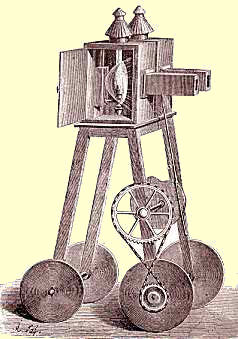 For that purpose a magic lantern was mounted on a wheeled pedestal which was able to approach the screen from behind, or recede from it, thus making the projected figures swell out into giants of enormous magnitude, or contract them into puny dwarfs. Of course the varying distance between the lantern and the back of the screen should normally alter the focus and the intensity of light as well. To compensate this, the apparatus had an ingenious auto-focus and auto-aperture arrangement. A combination of frames, belts, rods, levers and other contraptions, coupled with the wheels of the cart, caused the lens to slide backwards and forwards to provide the correct focus at all times. A mask with a triangular cut-out was able to rise and fall in front of the lens to give a constant intensity of light while the lantern was being moved. Robertson called his movable lantern a 'Phantascope'. |
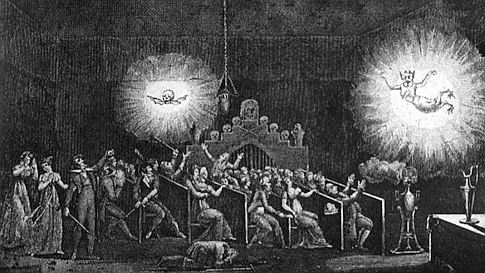
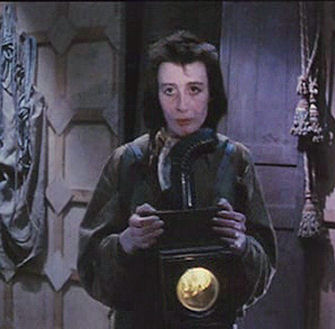 |
|
To
heighten the effect some stage machines were used to produce the sound
of thunder, funeral bells and penetrating supernatural noises and to arouse
smoke, fog and lights. In order to create the illusion that the images
were actually moving on screen he would also move most of his glass
slides through his phantascope very quickly in order. Robertson also had the help of several assistants,
walking around with small lanterns strapped to their chests, who added
some loose ghosts and monsters, dancing
around the walls and the tombs, to the show. He would often eliminate all sources of light during his shows in order to cast the audience in total darkness for several minutes at a time. Robertson would also lock the doors to the theatre so that no audience member could exit the show once it had started. |
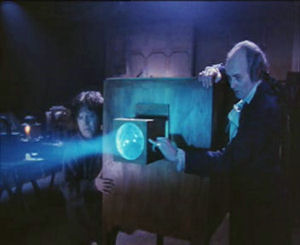
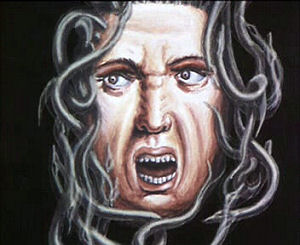
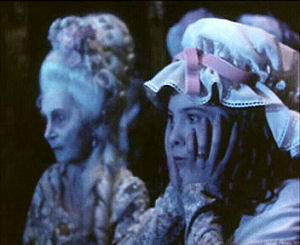 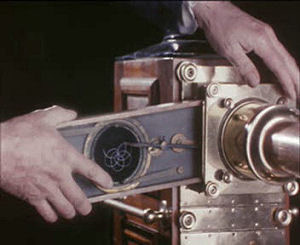
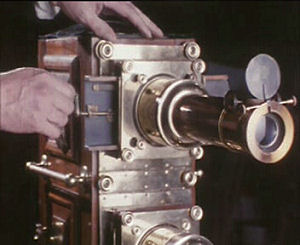
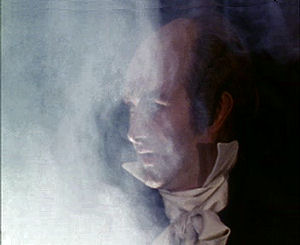 |
| Robertson was adept at
projecting the portraits of the diseased during his shows, often at the
special request of inconsolable relations.
"A young fop asked to see the apparition of a woman he had tenderly loved, and showed her portrait in miniature to the phantasmagorian, who threw on the brazier some sparrow feathers, a few grains of phosphorus and a dozen butterflies. Soon a woman became visible, with breast uncovered and floating hair, gazing upon her young friend with a sad and melancholy smile." Source: Coloured images from the Video-CD 'La Préhistoire du Cinema' Infogrames. |
|
|
|
|
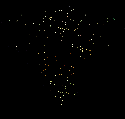 The
hand painted figures on Robertson's lantern slides were surrounded by a
black lacquer, to bring them to advantage, while using relatively weak
light sources at that time. Even today the slides that are
filled up with black paint are sometimes called phantasmagorias. The
hand painted figures on Robertson's lantern slides were surrounded by a
black lacquer, to bring them to advantage, while using relatively weak
light sources at that time. Even today the slides that are
filled up with black paint are sometimes called phantasmagorias. |
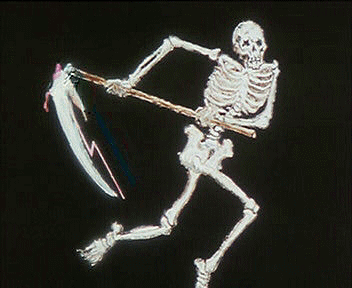 |
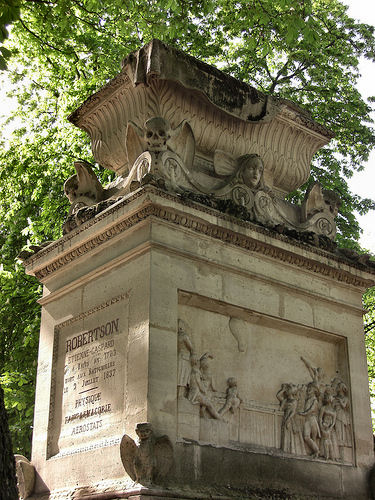 |
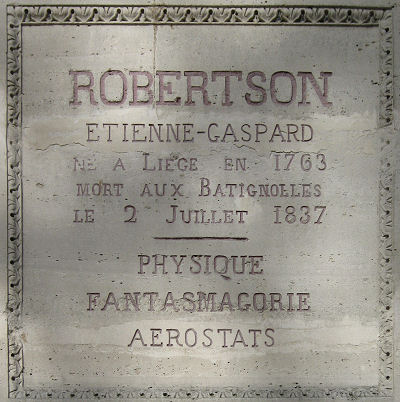 |
| Robertson (originally Robert) was born in Liege, Belgium, 1763. The tomb in which Robertson was interred after his death in 1837 can be found at the Père-lachaise cemetery in Paris. | |
|
'I am only satisfied if my spectators, shivering and shuddering, raise their hands or cover their eyes out of fear of ghosts and devils dashing towards them.' |
|
|
|
|
| |
©1997-2023 'de Luikerwaal' All rights reserved. Last update: 24-12-2023. |
